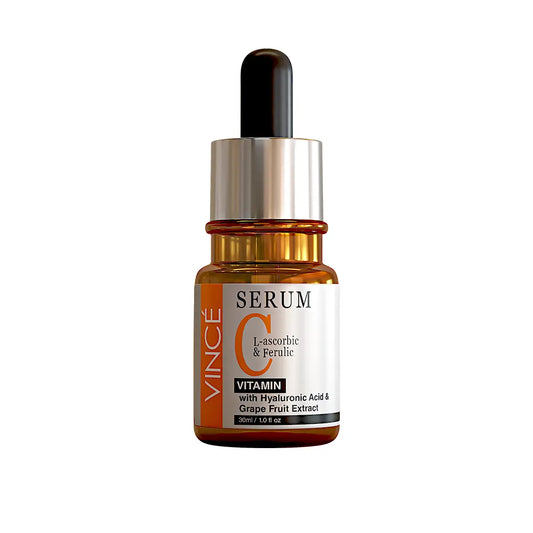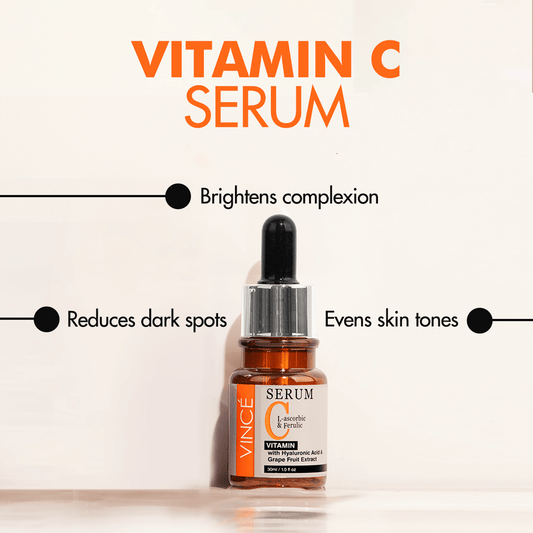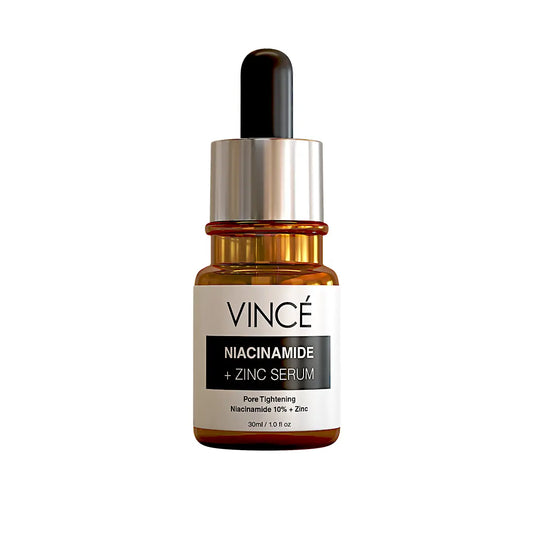Stretch Marks - Types, Causes, and How to get rid of them

Stretch marks are common that affect a person's confidence. Whether due to sudden weight gain or pregnancy, it is a beauty problem usually seen on the thighs, lower back, waist, hips, breasts, arms, and hips.
In general, stretch marks appear as a band of parallel lines on your skin. These lines are different in texture and color from your normal skin and range from purple to bright pink to light grey. They occur when the skin layer suddenly expands in the case of pregnancy.
The dermis contains strong, interconnected fibers that allow your skin to stretch as your body grows. Sudden weight gain results in stretch marks and skin breakage, leading to stretch marks.
Blood vessels appear under the skin when skin tears come out, leaving stretch marks initially red or purple. Later, lighter fat appears under your skin when the blood vessels become smaller.
What Exactly Is A Stretch Mark?
Stretch marks appear when our skin is shrunk or stretched. The sudden change causes the elastin that supports our skin to explode. Stretch marks appear as the skin heals. Fluctuations in hormone levels seem to play a role.

If you develop stretch marks, you are more likely to do so during these times:
- Growth is faster than in puberty
- Pregnancy
- Rapid weight loss or gain
- Weight training when your muscles increase rapidly.
Prolonged exposure to corticosteroids can also cause stretch marks. In addition, if you have morphine syndrome or Cushing's disease, you may notice stretch marks.
When stretch marks first appear, they may be red, purple, pink, reddish-brown, or dark brown, depending on your skin color. Early stretch marks may feel slightly raised and itchy. Over time, the color fades, and tight bands sink under your skin.
Dermatologist says that stretch marks are faint lines or bands of thin reddish skin that later turn white, smooth, and shiny. They occur on the abdomen during pregnancy. These are common in people who suddenly gain weight (bodybuilders and weight lifters).
Causes of Stretch Marks
- Pregnancy.
- Puberty.
- Weight Gain.
- Corticosteroids.
- Genetics.
- Health Conditions.
- Bodybuilding.
1. Pregnancy
Most women develop stretch marks during pregnancy because the fibers in the skin become soft and stretched, making room for a developing baby. As the baby gets older, stretch marks appear on the abdomen, thighs, and breasts due to constant stretching.
2. Puberty
During puberty, adolescents experience a sudden increase in growth and may gain or lose weight rapidly. This sudden stretch and contraction of the skin cause stretch marks on the hips, thighs, and breasts.
3. Weight Gain
Weight gain in a short time causes stretch marks to appear as the skin suddenly stretches. Similarly, stretch marks also appear if you are on a diet due to weight fluctuations. Therefore, it is advisable to gradually lose weight so that the skin does not get stressed.
4. Corticosteroids
Corticosteroid lotions, creams, and pills used to treat certain skin diseases can also cause stretch marks as they reduce the level of collagen in your skin. As a result, it reduces the skin's ability to stretch and puts you at risk for stretch marks.
5. Genetics
If your parents have stretch marks, you are more likely to have them.
6. Health Conditions
Health conditions such as Cushing's syndrome, morphine syndrome, and other adrenal gland disorders may cause stretch marks. For example, in Cushing's syndrome, the body produces more cortisol, which causes these symptoms.
7. Bodybuilding
Bodybuilders often face the problem of stretch marks. Rapid muscle growth and sometimes misuse of anabolic steroids can lead to the appearance of stretch marks to accelerate muscle growth.
Have you ever faced some depressed and slightly parallel lines on your body, especially on your arms, thighs, and legs? This is a very common and usual problem that most people face more than one time in their lives.
When these stretch marks appear on someone's body, he might feel fea issue? These stretch marks are normal and not creating any itching effect. for more details about stretch marks must know how to get rid of stretched marks.
Types of Stretch Marks
1. Red stretch marks
Also known as Striae Rubra, these persistent scars are fresh and appear red or purple early. They occur when the skin layer is exposed and stretched to the blood vessels.
At this point, you may have a lot of itching around these stretch marks. However, getting rid of red stretch marks quickly is easy because they are new.
2. White stretch marks
Also known as Striae Alba, they are the most stubborn and are white or silver. Minor tears on the skin occur when the size of blood vessels decreases; thus, fat appears under the skin.
Because white spots are mature, they may take longer to heal. Many natural remedies can help relieve stretch marks and get rid of them.
Home remedies to Treat Stretch Marks
- Aloe Vera Gel.
- Argan oil.
- Lemon juice.
- Egg white.
- Potato juice.
- Olive oil.
- Sugar.
- Castor oil.
- Apricot.
- Black tea.
1. Aloe Vera Gel
Aloe Vera gel is very effective. Apply this Aloe Vera gel on stretch marks and wash off with water after 2-3 hours.
2. Argan oil
Argan oil contains vitamin E and increases the skin's elasticity by rubbing it on the stretched marks. As a result, it gradually removes the broken tissues and removes the scars.
3. Lemon juice

Lemon juice contains natural bleaching properties, so it effectively helps reduce visibility. Use fresh lemon juice daily, or rub a slice of lemon on your scars to see results.
4. Egg white
Egg white is high in protein and amino acids, a portion of healthy food for the skin. When applied to stretch marks, egg whites will help tighten the skin and lighten the scars.
5. Potato juice
Potatoes contain starch and other skin light enzymes, so they are often used to lighten dark circles and blemishes on the skin.
However, it effectively bleaches the skin and reduces the exposure to stretch marks when applied regularly.
6. Olive oil
Full of moisturizing properties, olive oil is packed with antioxidants and other nutrients that help to heal skin damage.
In addition, cold-pressed olive oil to stretch marks will help get rid of them over time.
There are some other great ways to make your skin moisturized. These steps will help you to make your skin hydrated and fresh.
7. Sugar
Make a scrub by mixing sugar, olive oil, and lemon juice. Apply it to stretch marks and rub for 10 minutes and wash with warm water.
8. Castor oil
Massage with castor oil on the stretch marks in a circular motion for 15-20 minutes.
After the massage, cover the area with a thin cotton cloth. For impressive results, do this for a month.
9. Apricot
Grind 3-4 apricots after removing their seeds to make a smooth paste. Apply the paste to the stretch marks. Leave it for 20 minutes. Then wash it with lukewarm water.
10. Black tea
Black tea contains many vitamins and minerals, including vitamin B12, which help control skin tone.
Boil one or two tablespoons of black tea and add salt to it. After cooling, apply the mixture to the scars and repeat this process until they disappear.
Mostly during pregnancy, women show signs of stretch marks. It is estimated that 50 to 90% of pregnant women will produce stretch marks before delivery.
Some experts believe that hormones can make you more prone to stretch marks in pregnancy. Hormones can bring more water to the skin, relax it and make it easier to tear when pulled.
you need to know more interesting facts about stretch marks before and after pregnancy.
Dietary Remedies
- 1. Water
- 2. Vitamin C
- 3. Vitamin E
- 4. Gelatin
- 5. Omega 3 Fatty Acids
1. Water
Drinking 8-10 glasses of water daily is perfect for the skin. It helps to restore its elasticity and keeps it soft and supple. In addition, it helps to reduce stretch marks.
2. Vitamin C
Foods such as raw cabbage, citrus fruits, berries, kiwi fruit, melons, peppers, broccoli, peas, pineapple, spinach, turnips, and tomatoes provide the recommended daily allowance of vitamin C.
It is an antioxidant that helps our body fight toxins. Adequate amounts of radical vitamin C heal skin blemishes.
3. Vitamin E
Vitamin E is an antioxidant and fights free radicals while nourishing the skin. Foods such as almonds, raw seeds, pumpkin and sesame, avocado, broccoli, spinach, parsley, olives, and papaya are rich in vitamin E.
Daily use of these foods is helpful to remove stretch marks.
4. Gelatin
Gelatin contains collagen, which is present in your skin and is responsible for providing elasticity to your skin. Bone broth (chicken, lamb, or beef) is one of the best natural sources of gelatin in your diet.
5. Omega 3 Fatty Acids
Omega 3 fatty acids also help increase skin elasticity. Foods such as flax seeds, chia seeds, salmon, sardines, cod liver, walnuts, soybeans, beef, tofu, prawns, and cabbage can go a long way in keeping stretch marks away.
There is a misconception about stretch marks that they are only available to women. It may be because many women get stretch marks during pregnancy when their skin grows too fast to adjust to the baby. But men also get stretch marks, and there are many reasons why they are more likely to get them.These are the 12 natural ways to get rid of male stretch marks. These ways will help you to know how natural remedies help you in great way and make your skin beautiful and charming.
FAQs
1. What Causes Stretch Marks On Hips?
Stretch marks on the hips appear when the skin layer stretches during puberty, sudden weight loss, muscle building, or pregnancy. In addition, genes play an essential role in developing stretch marks. If someone in your family has a history of stretch marks, you are more likely to create them.
2. How Can Avoid Getting Stretch Marks?
Drinking 12 glasses of water daily help restore skin elasticity and keep it soft and supple, thus helping to prevent stretch marks. With drinking water, make sure you moisturize and exfoliate your skin from time to time.
To fight toxins and free radicals, you should include foods rich in vitamin C in your daily diets, such as berries, raw cabbage, lemons, kiwi fruit, melons, peas, peppers, broccoli, pineapple, spinach, tomatoes, and turnips.
In addition, flax seeds, chia seeds, salmon, sardines, cod liver, walnuts, soybeans, beef, prawns, and cabbage are rich in omega-3 fatty acids. It can also help keep stretch marks away.
3. How Long Does It Take Time To Remove Stretch Marks?
It is difficult to get rid of them permanently, but the good news is that they fade over time. However, within 7 to 8 months, if you take good care of your skin and health, these scars will appear more petite.
Massage of affected areas with vitamin E-rich Argan oil increases the skin's elasticity, which helps to heal broken tissues and reduce scarring.
Lemon juice contains natural bleaching properties, so it can also effectively reduce visibility.
Potato juice contains starch and other skin light enzymes that also help bleach the skin, and regular use can help reduce the appearance of stretch marks.
In addition, Aloe Vera gel, apricot, black tea, and castor oil can help speed up the process.
4. Is Petroleum Jelly can remove Stretch Marks?
Petroleum jelly helps moisturize the skin and maintain its elasticity. In addition, to stay soft on the skin, it also helps retain moisturizer, which keeps the skin soft and supple.
A daily massage of the affected area with a cream or lotion containing petroleum jelly helps grow new tissue that breaks down the collagen bands that cause stretch marks.
5. Is Laser Stretch Mark Removal Treatment Safe?
Although natural remedies can help get rid of stretch marks, you may want to consider medical or surgical options for them.
For example, pulsed dye laser, also called vascular laser, is regarded as the most effective against fresh stretch marks. However, this treatment is less effective if your skin is deep.
On the other hand, fractional laser treatment is effective in the case of old stretch marks. Furthermore, microdermabrasion, which is often used to treat acne, can help reduce the appearance of persistent scars.
However, this option can cause skin irritation. In addition, Abdominoplasty can help to get rid of stubborn spots permanently; it is quite expensive and comes with risks.







